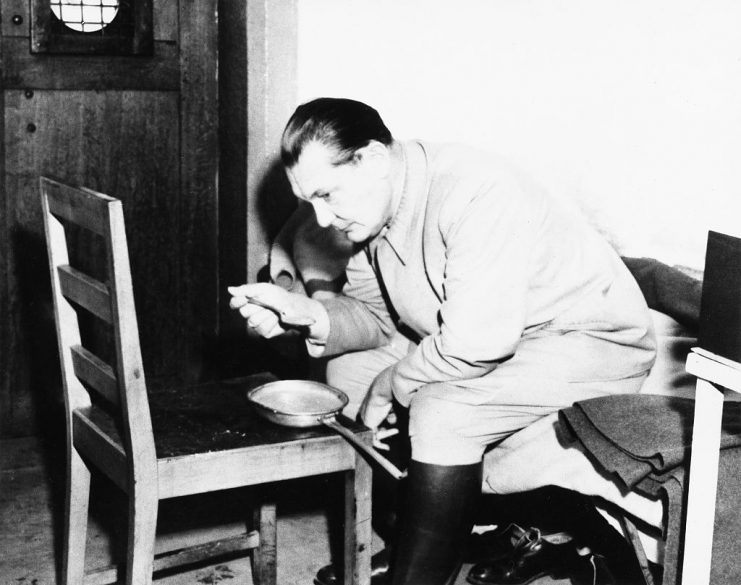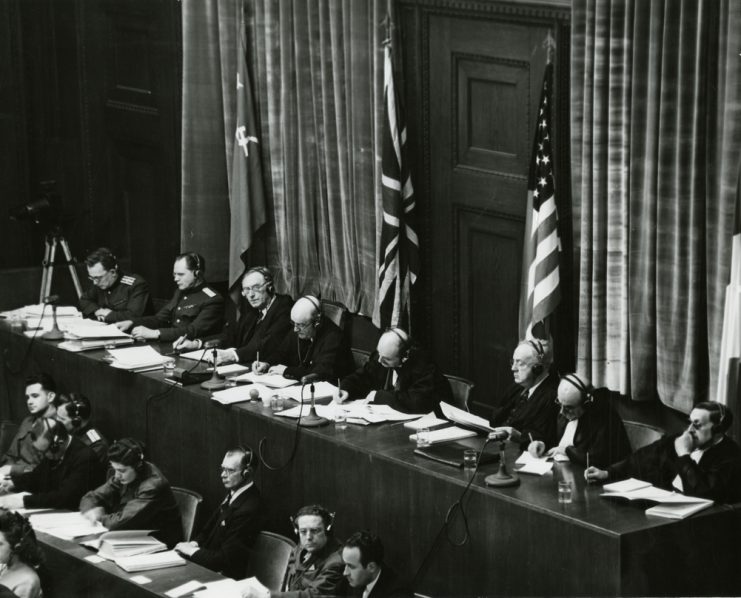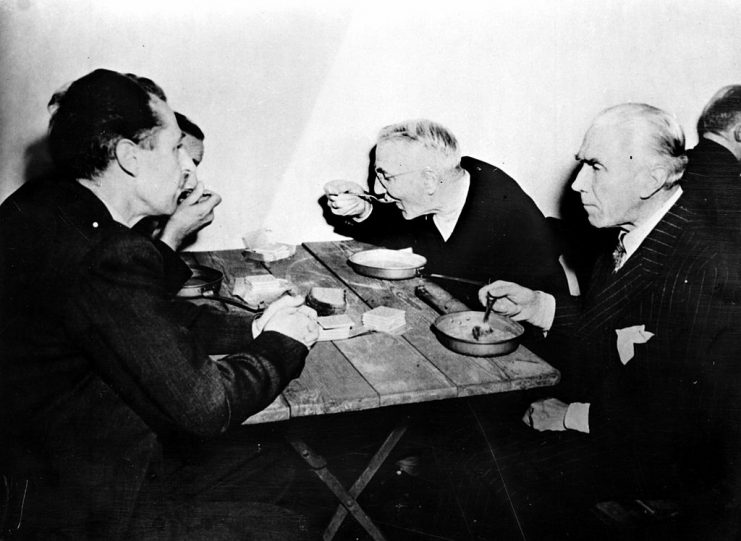After two years of secretive work, the audio recordings of the Nuremberg trials will be made available to the public in digital format.
The Memorial of the Shoah in Paris accepted the digitized recordings from the post-World War II trial of Nazi leaders.
Several hundred hours of recordings from the trials that happened in Nuremberg, Germany, are captured in the recordings. Since 1950, the only copies of the recordings existed on 2,000 large discs which were stored at the International Court of Justice in the Hague, Netherlands.
The new digital copies will be available for listening at the Hague, the Shoah Memorial in Paris, and the US Holocaust Memorial Museum.

The head archivist of the Shoah Memorial, Karen Taieb, said that she hopes the recordings will allow researchers and students to feel the powerful and emotionally charged trials in a way that the written transcripts never allowed. Prior to the release of these digital recordings, the written transcripts have been the only way for researchers to see what occurred in the trials.
The Nuremberg Trials were an important time for international law. The trials showed the world the extent of the Nazi atrocities and set precedents for how to define and prosecute war crimes.
The first, and most famous, of the trials was held between November 1945 and October 1946. An international panel of judges convicted 18 high-ranking Nazi leaders on at least one count each. 12 of the Nazis were sentenced to death.

Only 28 hours of the trial were filmed.
Fabien Theofilakis is a professor at Sorbonne University. He researches the Holocaust. In spite of efforts to educate and combat antisemitism, there has been an increase in hate crimes. He believes that making the recordings available to the general public will allow future generations to remember the lessons of the Holocaust.
Gecko is the French sound restoration company that was hired to digitize the recordings. Emiliano Flores headed up the project. They worked in secrecy in order to protect the original recordings from neo-Nazis and unscrupulous collectors.
Flores says that the team is proud of their work but also relieved to have completed the project.
Besides the 1,200 hours of audio recordings, film clips which were presented as evidence and 250,000 pages of documents and photos are being made available for viewing at the Shoah Memorial.
The Nuremberg Trials were a series of 13 trials that were held in Nuremberg, Germany, from 1945 to 1949. Nazi party leaders and members were tried for such crimes as crimes against peace and crimes against humanity. They are considered a landmark in establishing a permanent international court and for dealing with genocide and other crimes against humanity.

The trials were the first time anyone had been tried in an international court for war crimes. Previously, people had been executed for war crimes but these were instances of single countries prosecuting under their own laws and not under international law.
Nuremberg was selected as the location for the trials because the Palace of Justice there survived the war relatively unscathed and it held a large prison area. Also, the annual Nazi propaganda rallies had been held in Nuremberg so holding the trials there was a symbolic end to the Nazi era.
As in British and American law, prosecutors and defense attorneys were used but the decisions and sentences were handled by a tribunal rather than a single judge and jury. Each of the four Allied countries provided two judges for the trial. One would be the primary judge from that country and the other was an alternate.
Another first for the trials was the introduction of instant translation. IBM developed technology and hired people from international telephone exchanges to provide immediate translation between German, English, French and Russian.
Another Article From Us: 93-Year-Old Former SS Guard Goes on Trial in Germany
Though controversial for some of the decisions made in setting up the trials, they were instrumental in establishing the international law we have today.
